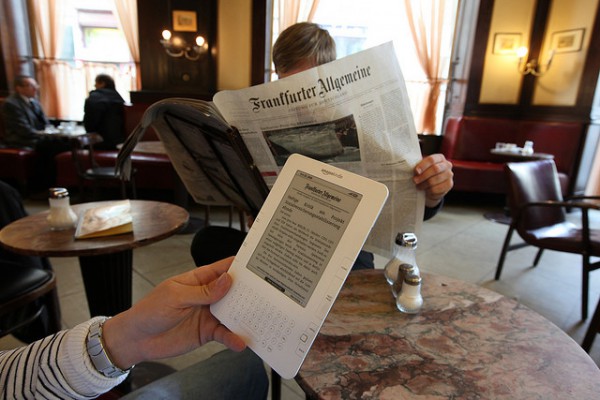

What if journalism were invented today? How would a computer scientist go about building it, improving it, iterating it?
He might start by mapping out some fundamental questions: What are the project’s values and goals? What consumer needs would it satisfy? How much should be automated, how much human-powered? How could it be designed to be as efficient as possible?
Computer science Ph.D. Nick Diakopoulos has attempted to create a new framework for innovation in journalism. His new white paper, commissioned by CUNY’s Tow-Knight Center for Entrepreneurial Journalism, does not provide answers so much as a different way to come up with questions.
“News organizations still think too incrementally. … They need to break the form of news — the article as their atomic unit.”
Diakopolous identified 27 computing concepts that could apply to journalism — think natural language processing, machine learning, game engines, virtual reality, information visualization — and pored over thousands of research papers to determine which topics get the most (and least) attention. (There are untapped opportunities in robotics, augmented reality, and motion capture, it turns out.)
He thinks computer science and journalism have a lot in common, actually. They are both fundamentally concerned with information. Acquiring it, storing it, modifying it, presenting it.
“The goal is really about making innovation in journalism more technologically literate and aware,” Diakopolous told me. The obstacles to progress in news organizations are probably cultural — “not having come from a user-centered design culture,” he said, “where design thinking is important or…you really think about people’s needs or values.”
Diakopolous deconstructs the newsgathering process to help identify which parts can be better handled by computers than humans. (Rest assured, humans: “It’s unlikely in the near-term that automated systems will fully replace people,” he concludes, “but there are many opportunities for using technology to enhance the efficiency and effectiveness of these processes.”)
The most practicable takeaway is Diakopolous’ final exercise, a real-life series of brainstorms he conducted with CUNY students and practitioners. He created a card-based game to encourage rapid and frictionless ideation. In three five-minute rounds, five groups generated 54 ideas. About a quarter of them were not half bad, he said. (Some are listed at the bottom of this post.)
News executives should be hiring scientists. They should be testing the limits of what’s practical.
The Tow-Knight Center will distribute this game — free — to j-schools and media companies, said Jeff Jarvis, who runs the center. (You have to request one here.) Diakopolous has proposed bringing the game to this year’s Online News Association conference, and they’re asking for votes.
“I believe that news organizations still think too incrementally,” Jarvis wrote today. “They aren’t being disruptive — even revolutionary — enough. They need to break the form of news — the article as their atomic unit — because they can. They need to imagine and experiment with new ways to serve their publics. They need to ask what business they are really in.”
News executives should be hiring scientists, Diakopolous said. They should be conducting all-staff brainstorms. They should be testing the limits of what’s practical and dreaming a little.
“An often-cited statistic from health care research is that it takes 17 years to take a research paper in medicine and have the results of that paper be translated into clinical practice,” Diakopolous told me. “Now I don’t know what the exact number is for computer science. It’s probably less than 17 years, but it might not be that much less. It still takes a long time for the cutting-edge, bleeding-edge ideas that are being published in research to make their way into practice.”
Part of his motivation for doing the research is to bring those two ends of the spectrum closer, to help journalists meet technologists halfway “and maybe bring down that period of transfer.”
The paper is high-concept but short, and everyone who wants to reinvent journalism should read it. (You might have to read it twice. Here’s a PDF version.) Breaking down the problems makes solutions a lot more attainable.
If you’re curious, Diakopolous provided me some of the ideas generated by CUNY students in his brainstorming sessions:
Photo of old and new media by Gregory Gruber used under a Creative Commons license.